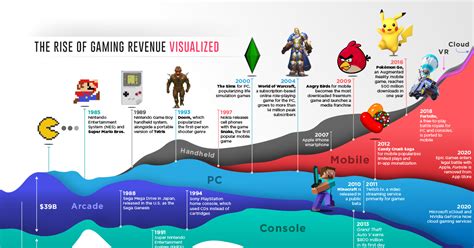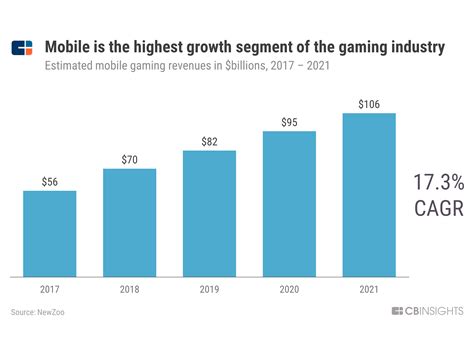Breaking News


Popular News


Explore the history of mobile gaming from its emergence and innovation in touchscreen technology to the rise of AR and VR. Learn about milestone moments in mobile gaming.Mobile gaming has become an integral part of our daily lives, revolutionizing the way we consume entertainment and interact with technology. With a rich history filled with milestone moments, mobile gaming has evolved into a multi-billion dollar industry that continues to shape the future of gaming. From the early days of simple pixelated games to the introduction of app stores and the integration of augmented reality, the world of mobile gaming has experienced significant advancements that have captivated and engaged audiences worldwide. In this blog post, we will explore the history of mobile gaming, from its humble beginnings to its integration into virtual reality, and examine the key moments that have defined the industry. Join us as we take a journey through the evolution of mobile gaming and celebrate the innovative developments that have propelled it to new heights.
Contents

Mobile gaming has come a long way since its humble beginnings. The history of mobile gaming can be traced back to the late 1990s when Nokia introduced the game Snake on its popular line of mobile phones. This simple, yet addictive game laid the foundation for what would eventually become a global phenomenon.
In the early 2000s, the introduction of Java-based games allowed for more complex and immersive gaming experiences on mobile devices. This innovation opened the doors for developers to create a wide variety of games, ranging from puzzles and strategy games to sports and racing titles.
The launch of Apple’s App Store in 2008 marked a turning point in the history of mobile gaming. This digital marketplace made it easier than ever for developers to distribute their games to a massive audience. It also empowered players to discover and download games directly to their iPhones, sparking a surge in mobile gaming popularity.
With the advent of smartphones and the widespread adoption of touchscreen technology, mobile gaming continued to evolve. The ease of use and intuitive nature of touchscreens made gaming on the go more accessible and appealing to a broader audience. This paved the way for the rise of mobile gaming as a mainstream form of entertainment.

The introduction of app stores has been a pivotal moment in the history of mobile gaming. Before the advent of app stores, users had to manually search for and install games on their devices, often from unreliable sources. The app store changed the game by providing a centralized platform for users to discover, download, and update games with ease.
App stores also opened up new opportunities for game developers, allowing them to reach a wider audience and monetize their creations more effectively. With the introduction of app stores, the mobile gaming industry saw a surge in creativity and innovation as developers were able to experiment with new game concepts and reach millions of potential players.
Furthermore, app stores created a more streamlined experience for users, with the ability to browse, purchase, and download games in a few simple steps. This convenience played a critical role in the rapid growth and popularity of mobile gaming, making it more accessible to a wider audience than ever before.
In conclusion, the introduction of app stores marked a turning point in the history of mobile gaming, revolutionizing how games are distributed, discovered, and played. It set the stage for the industry’s explosive growth and continues to shape the way we experience games on our mobile devices today.

One of the most significant milestones in the history of mobile gaming is the innovation in touchscreen technology. Before the introduction of touchscreens, mobile games were limited to simple button inputs, severely constraining the complexity and immersion of the gaming experience. However, with the advent of touchscreen technology, mobile gaming was revolutionized, allowing for intuitive and interactive gameplay that closely mimicked the experience of playing on traditional gaming platforms.
Furthermore, the innovation in touchscreen technology paved the way for a new wave of gaming genres and experiences, such as puzzle games that leveraged swiping and tapping gestures, as well as immersive role-playing games with rich, touch-based controls. The introduction of capacitive touchscreens, which allowed for multi-touch functionality, further expanded the possibilities for mobile gaming, enabling more intricate and dynamic gameplay mechanics.
As touchscreen technology continued to evolve, with the integration of features like haptic feedback and pressure sensitivity, the potential for innovative and engaging mobile gaming experiences only continued to grow. Developers were able to create games that took full advantage of the unique capabilities of touchscreen devices, offering players a level of immersion and interactivity that was previously unimaginable.
In conclusion, the innovation in touchscreen technology has been a transformative force in the world of mobile gaming, shaping the experiences of both developers and players alike. Without this crucial milestone, the landscape of mobile gaming would look vastly different, and the industry as a whole owes much of its success to the advancements in touchscreen technology.

Mobile gaming has experienced various milestone moments that have shaped the industry into what it is today. One of the most significant developments in the history of mobile gaming is the rise of the freemium model. This innovative approach to monetization has transformed the way games are played and paid for on mobile devices.
The freemium model refers to games that are free to download and play, but offer in-app purchases for additional content or features. This model has allowed game developers to reach a wider audience by lowering the barrier to entry, while also generating revenue through microtransactions. As a result, it has become the dominant monetization strategy in the mobile gaming industry.
With the freemium model, players have the freedom to experience the core gameplay without having to make an upfront payment. This has democratized the gaming experience, allowing more people to enjoy and explore a wider range of games. Additionally, the availability of in-app purchases provides players with the option to support developers and enhance their gaming experience if they choose to do so.
In conclusion, the rise of the freemium model has had a profound impact on the mobile gaming industry. It has redefined the way games are monetized, making them more accessible to a global audience while also providing developers with a sustainable revenue stream. This milestone moment has been instrumental in shaping the modern landscape of mobile gaming.

Augmented Reality (AR) has revolutionized the mobile gaming industry, offering players a whole new way to interact with their virtual environments. With the integration of AR technology, game developers have been able to create immersive and interactive experiences that blur the lines between the real world and the digital realm.
One of the key milestones in the integration of AR in mobile gaming was the release of Pokémon Go in 2016. This game took the world by storm, allowing players to use their smartphones to hunt for and capture virtual creatures in real-world locations. The success of Pokémon Go demonstrated the massive potential for AR in gaming and paved the way for the development of countless AR-enhanced games.
Furthermore, the introduction of ARKit for iOS and ARCore for Android has made it easier for developers to incorporate AR features into their mobile games. These platforms provide a robust set of tools and libraries for creating high-quality AR experiences, empowering developers to push the boundaries of what is possible in mobile gaming.
The integration of Augmented Reality in mobile gaming has not only enhanced the gameplay experience for users but has also opened up new opportunities for innovative game design and storytelling. As AR technology continues to advance, we can expect to see even more groundbreaking and immersive AR-enhanced games in the future.

One of the most exciting developments in the world of mobile gaming has been the integration of virtual reality technology. Virtual reality, which involves the use of headsets and other devices to create immersive, three-dimensional environments, has the potential to completely transform the way we experience games on our mobile devices.
With virtual reality, players can feel like they are truly inside the game, interacting with the environment in a way that was previously impossible. This technology opens up new possibilities for game developers, allowing them to create experiences that are more immersive and engaging than ever before.
Furthermore, the integration of virtual reality into mobile gaming has the potential to bring in a whole new audience of players who may not have been interested in traditional mobile games. The immersive nature of virtual reality gaming can appeal to a wide range of people, from hardcore gamers to casual players looking for a new and exciting experience.
As virtual reality technology continues to improve and become more accessible, it is likely that we will see even more innovation in the world of mobile gaming. Developers are already working on new and exciting virtual reality games, and as the technology becomes more widespread, we can expect to see even more groundbreaking experiences in the future.

What is considered the first mobile game?
The first mobile game is considered to be Tetris, which was created and released in 1994 for the Hagenuk MT-2000, a mobile phone produced in Denmark.
When did mobile gaming start to gain popularity?
Mobile gaming started to gain popularity in the early 2000s with the introduction of Java-enabled mobile games that could be downloaded and played on a variety of phones.
What was the impact of the launch of the iPhone on mobile gaming?
The launch of the iPhone in 2007 revolutionized mobile gaming with its App Store, which allowed developers to create and distribute games directly to users, leading to a surge in mobile game development and consumption.
What are some milestone moments in mobile gaming history?
Some milestone moments in mobile gaming history include the release of Angry Birds in 2009, the launch of Pokemon Go in 2016, and the rise of battle royale games such as Fortnite and PUBG in 2018.
How has the technology for mobile gaming evolved over the years?
The technology for mobile gaming has evolved from simple 2D games with limited graphics to complex 3D games with high-quality visuals and immersive gameplay, thanks to advancements in mobile hardware and software.
What are the current trends in mobile gaming?
Current trends in mobile gaming include the rise of hyper-casual games, the implementation of augmented reality (AR) and virtual reality (VR) technologies, and the increasing focus on multiplayer and social gaming experiences.
What does the future hold for mobile gaming?
The future of mobile gaming looks promising, with advancements in 5G technology, cloud gaming, and mobile hardware expected to further improve the gaming experience, as well as the potential for new genres and innovative gameplay mechanics.